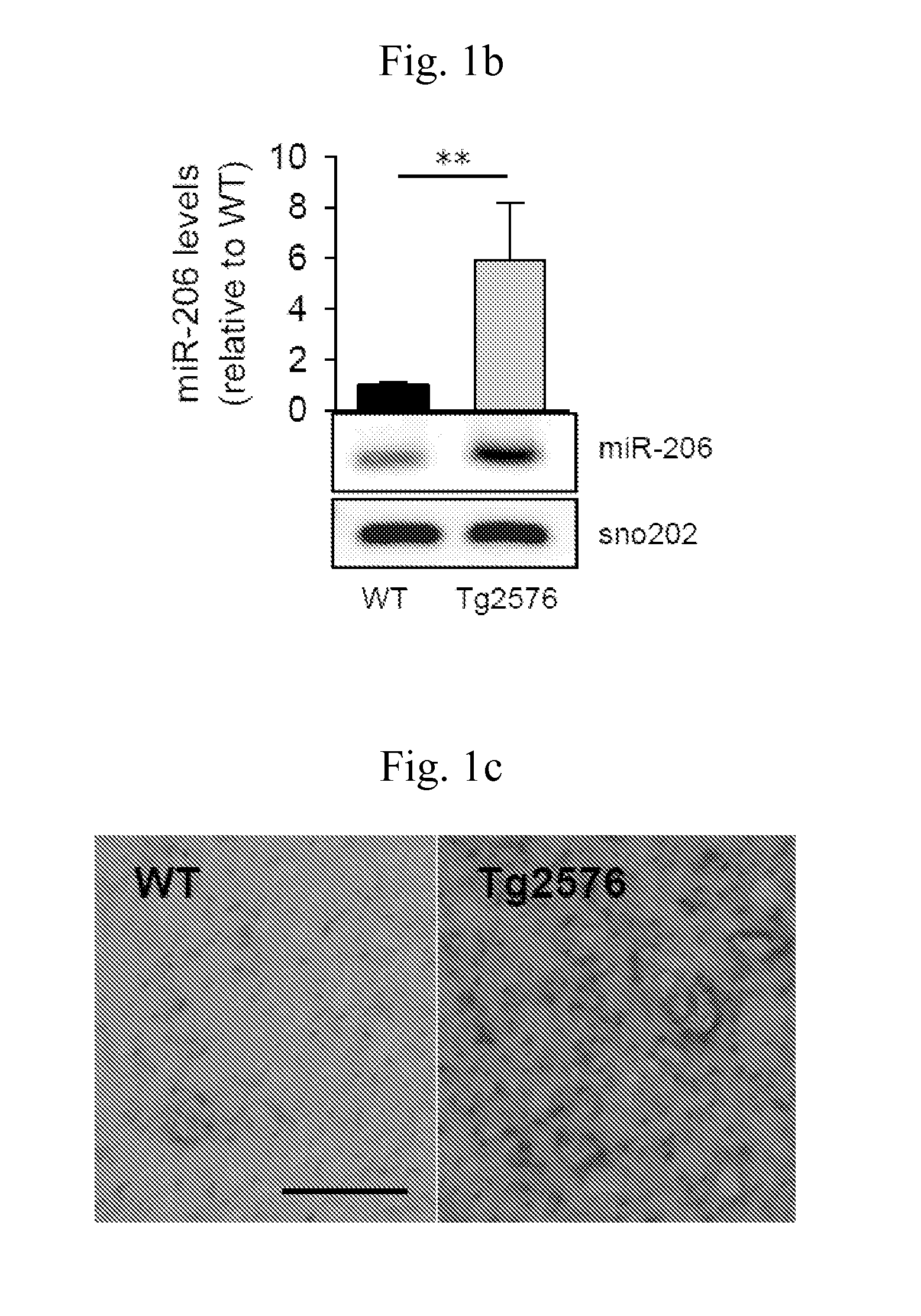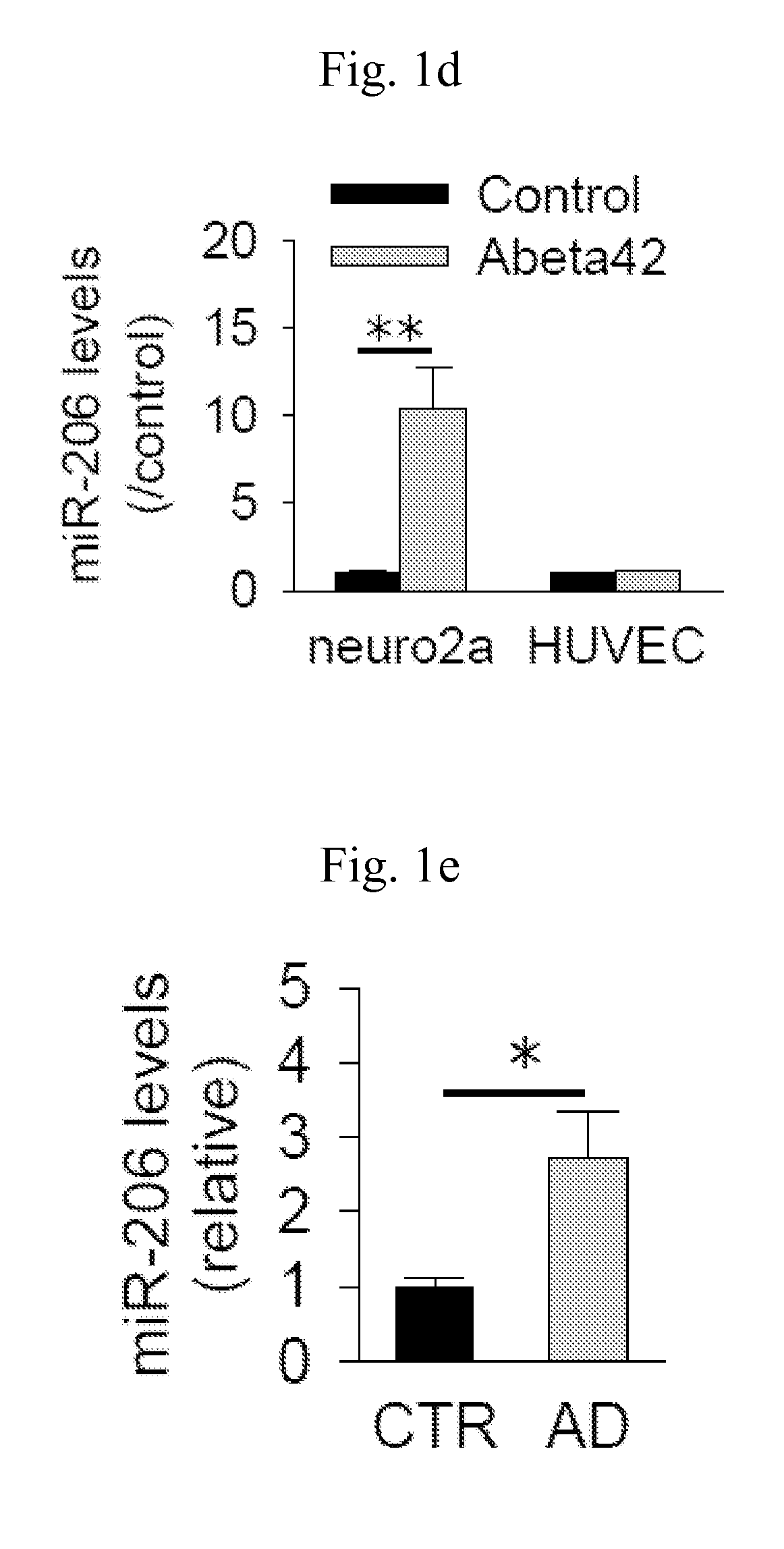Treatment of neurodegenerative diseases by targeting mirna
- Summary
- Abstract
- Description
- Claims
- Application Information
AI Technical Summary
Benefits of technology
Problems solved by technology
Method used
Image
Examples
example
Material and Methods
AD(Alzheimer's Disease) Model
[0055]This study was approved by Institutional Animal Care and Use Committee of Seoul National University Hospital, which was accredited by the Association for the Assessment and Accreditation of Laboratory Animal Care International. Tg2576 mice (Taconic, Hudson, N.Y., USA), which express the human 695-amino acid isoform of amyloid precursor protein containing the Swedish double mutation (Swedish mutation; Lys670→Asn, Met671→Leu) under the control of the prion promoter (Hsiao et al., 1996), were used as a transgenic model of AD. The transgenic and wild type mice were maintained in separate cages at room temperature (25° C.) with free access to food and water under a 12-hour light-dark cycle, and used for miRNA analysis at 7 month or 12 months of age.
miRNA Microarray
[0056]Agilent miRNA Microarray 8×15K kits for mouse or human (Agilent, Santa Clara, Calif.) were used. RNA from mice brains were pooled (two mice per pool). Frozen samples ...
PUM
 Login to View More
Login to View More Abstract
Description
Claims
Application Information
 Login to View More
Login to View More - R&D
- Intellectual Property
- Life Sciences
- Materials
- Tech Scout
- Unparalleled Data Quality
- Higher Quality Content
- 60% Fewer Hallucinations
Browse by: Latest US Patents, China's latest patents, Technical Efficacy Thesaurus, Application Domain, Technology Topic, Popular Technical Reports.
© 2025 PatSnap. All rights reserved.Legal|Privacy policy|Modern Slavery Act Transparency Statement|Sitemap|About US| Contact US: help@patsnap.com



